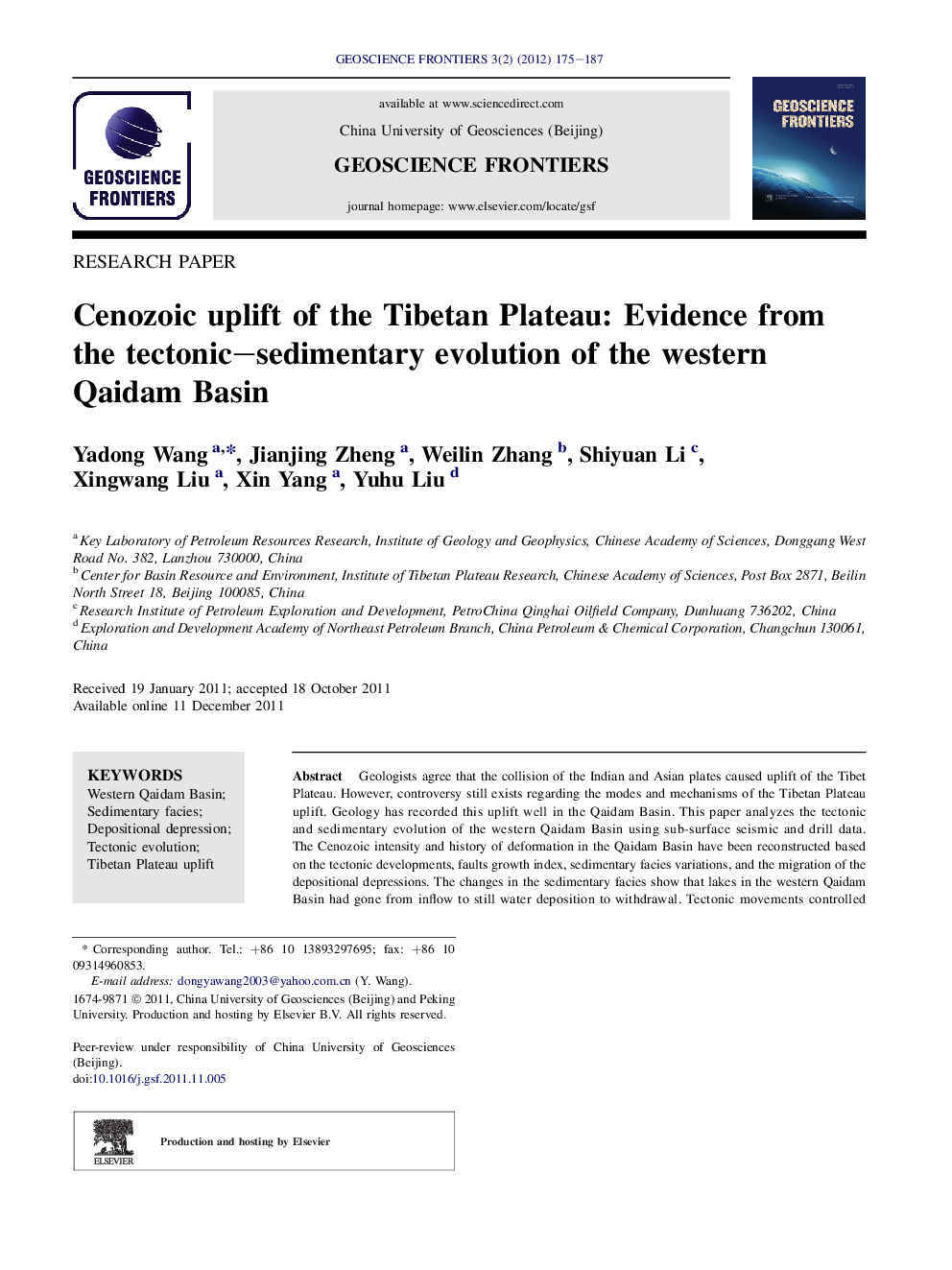| کد مقاله | کد نشریه | سال انتشار | مقاله انگلیسی | نسخه تمام متن |
|---|---|---|---|---|
| 4681732 | 1348870 | 2012 | 13 صفحه PDF | دانلود رایگان |

Geologists agree that the collision of the Indian and Asian plates caused uplift of the Tibet Plateau. However, controversy still exists regarding the modes and mechanisms of the Tibetan Plateau uplift. Geology has recorded this uplift well in the Qaidam Basin. This paper analyzes the tectonic and sedimentary evolution of the western Qaidam Basin using sub-surface seismic and drill data. The Cenozoic intensity and history of deformation in the Qaidam Basin have been reconstructed based on the tectonic developments, faults growth index, sedimentary facies variations, and the migration of the depositional depressions. The changes in the sedimentary facies show that lakes in the western Qaidam Basin had gone from inflow to still water deposition to withdrawal. Tectonic movements controlled deposition in various depressions, and the depressions gradually shifted southeastward. In addition, the morphology of the surface structures in the western Qaidam Basin shows that the Cenozoic tectonic movements controlled the evolution of the Basin and divided it into (a) the southern fault terrace zone, (b) a central Yingxiongling orogenic belt, and (c) the northern fold-thrust belt; divided by the XI fault (Youshi fault) and Youbei fault, respectively. The field data indicate that the western Qaidam Basin formed in a Cenozoic compressive tectonic environment caused by the India–Asia plate collision. Further, the Basin experienced two phases of intensive tectonic deformation. The first phase occurred during the Middle Eocene–Early Miocene (Xia Ganchaigou Fm. and Shang Ganchaigou Fm., 43.8–22 Ma), and peaked in the Early Oligocene (Upper Xia Ganchaigou Fm., 31.5 Ma). The second phase occurred between the Middle Miocene and the Present (Shang Youshashan Fm. and Qigequan Fm., 14.9–0 Ma), and was stronger than the first phase. The tectonic–sedimentary evolution and the orientation of surface structures in the western Qaidam Basin resulted from the Tibetan Plateau uplift, and recorded the periodic northward growth of the Plateau. Recognizing this early tectonic–sedimentary evolution supports the previous conclusion that northern Tibet responded to the collision between India and Asia shortly after its initiation. However, the current results reveal that northern Tibet also experienced another phase of uplift during the late Neogene. The effects of these two stages of tectonic activity combined to produce the current Tibetan Plateau.
Journal: Geoscience Frontiers - Volume 3, Issue 2, March 2012, Pages 175–187